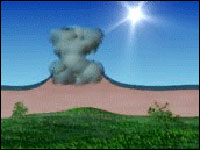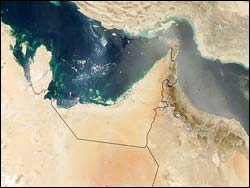The one-night-a-year spawning of massive star corals (Montastraea species) off of the Florida coast generates millions of infant corals, each of which has the potential to help replenish coral reefs that have undergone significant environmental damage in recent years.
Even so, the chance that these bundles of eggs and sperm released in early September will result in healthy new individuals capable of replenishing reefs depends on many factors, most importantly the establishment of sy
As the advance of global warming becomes more certain, accurate predictions about its impacts are still largely guesswork. How can we know what long-term warming will do to complex ecosystems? One way is to do a large experiment and see what happens. A new study published in the journal Ecology shows that artificially warming the seawater by 3.5oC in a California bay had dramatic effects on 150 species of seaweeds and animals.
David Schiel (University of Canterbury in Christchurch, New Zeal

While the Earth is moistened by rainfall, scientists believe that the water in soil can, in turn, influence rainfall both regionally and globally. Forecasters, water resource managers and farmers may benefit once this connection is better understood.
A NASA researcher led an effort that used a dozen computer models to locate “hot spots” around the world where soil moisture may strongly affect rainfall during northern hemisphere summertime. The results appear in the August 20 issue
Invasive species may cause severe economic losses. Thus the hot debate regarding the ecological mechanisms determining the outcome of biological invasions is of equal interest to scientific and business communities. Do invaders bump residents out by competing with them for scarce resources, or do they merely move in without causing harm to their neighbors?
In one of the first environmental impact studies ever, the Smithsonian Institution’s 1910 Panama Biological Survey provided ba
A better understanding of the ground beneath our feet may be the key to improved seasonal weather forecasts, say an international team of environmental scientists in the journal Science today.
Researchers investigating the impact of soil moisture on rainfall have found that, across the globe, there are at least three hotspots where rainfall seems to be directly influenced by the amount of moisture in the soil, leading to the tantalising possibility of more accurate long-term weat

NASA, Naval Research Laboratory (NRL) and Scripps Institution of Oceanography scientists have assembled in the Arabian Desert to study tiny airborne particles called aerosols and their effect on weather and climate. The scientists are collaborating with researchers from the United Arab Emirates Department of Water Resources Studies and 20 other U.S., European and South African research laboratories to decipher the complex processes controlling the area’s climate.
The United Arab Emirates Un